Infrared Light Therapy: Benefits, Risks & Expert Tips
Infrared light therapy reaches 1.5 inches (almost 4 cm) beneath your skin. This makes it much more effective than most light-based treatments. Most visible light therapies work with wavelengths between 380 and 750 nanometers (nm). Infrared light therapy uses longer wavelengths ranging from 780 nm to 1 millimeter. This deeper reach makes infrared therapy unique and fascinates health researchers. The differences between treatment options are worth exploring. Red light therapy operates at wavelengths of about 630-700 nm. Infrared therapy works in the invisible spectrum that our eyes can’t see.
Research reveals red light therapy’s benefits for inflammation and pain relief. Infrared light therapy shows remarkable results too, especially with chronic conditions. These include low back pain, cardiovascular disease, diabetes, and kidney disease. This piece will help you understand how infrared light therapy works. You’ll learn the key differences between red and infrared therapy. Our expert advice will guide you through choosing the right devices for your health needs. We’ll also cover safety tips and potential risks to help you make smart decisions about this promising treatment approach.
Understanding Infrared and Red Light Therapy
Light therapy has become a powerful healing tool, and different wavelengths offer unique benefits. Let’s explore the key differences between various types of light therapy to better understand their potential.
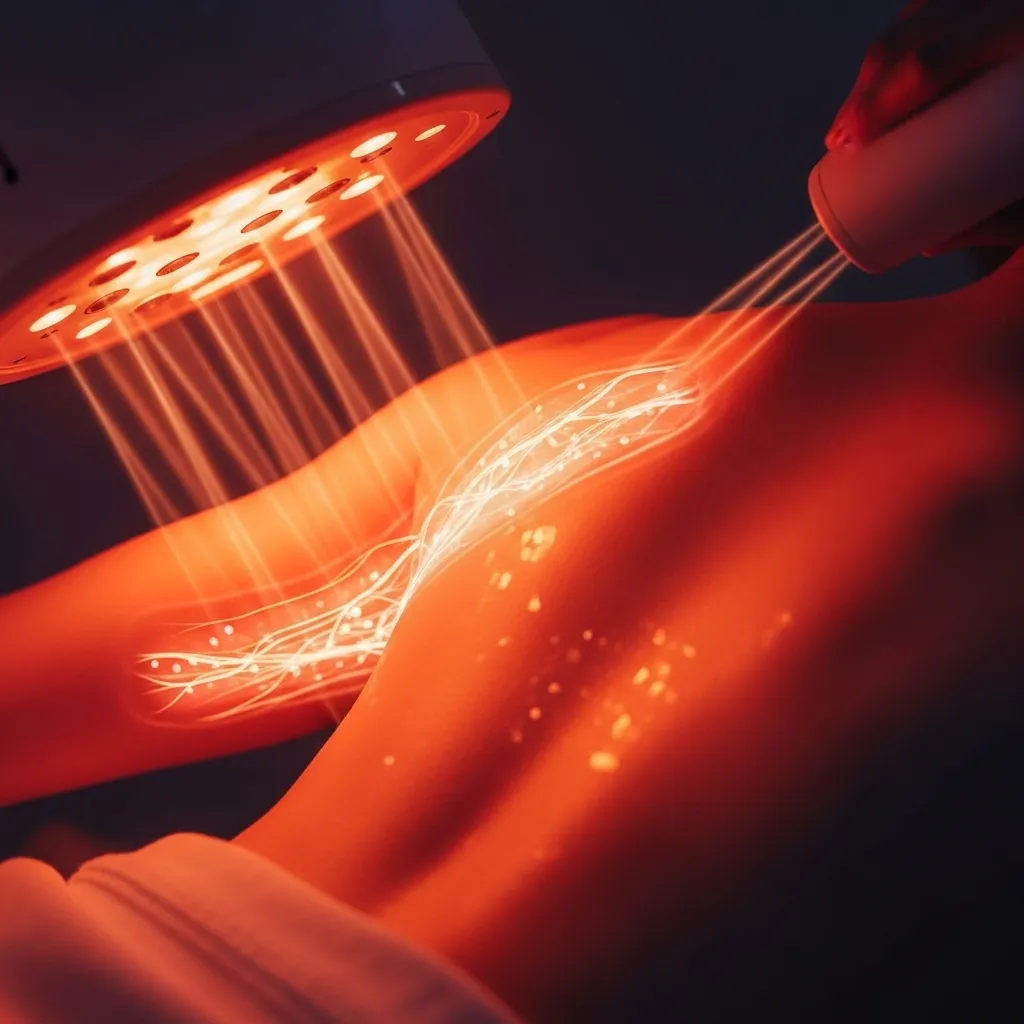
What is Infrared Light Therapy Treatment?
Infrared light therapy uses wavelengths between 780nm to 1mm on the electromagnetic spectrum. Unlike ultraviolet light that damages tissues and cells, infrared light helps cells heal and repair themselves. This therapy boosts circulation of oxygen-rich blood, which speeds up deep tissue healing and relieves pain.
The real transformation happens inside our cells. When photoreceptors in cells absorb infrared light, they trigger a chain of metabolic changes. Nitric oxide plays a crucial role here, it’s a gas that keeps arteries healthy by relaxing blood vessels, fighting free radicals, preventing blood clots, and controlling blood pressure. Research shows that wavelengths from 700 to 1,000 nanometers work best for healing inflammation.
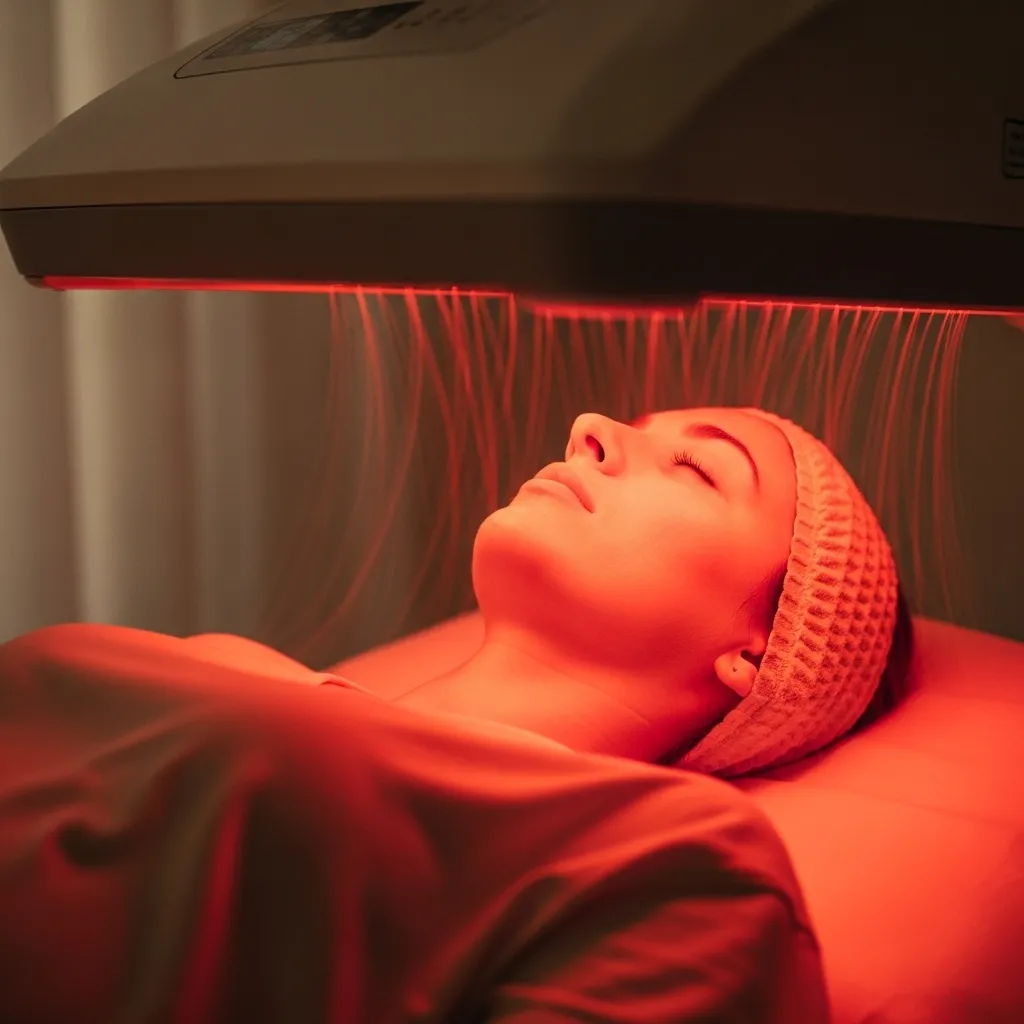
How does red light therapy differ from infrared?
The main difference between infrared and red light therapy is their wavelengths. We can see red light, which sits at the ‘long end’ of the visible spectrum (630nm-700nm). Infrared light remains invisible with longer wavelengths (800nm-1000nm). These wavelength differences affect how deep the light can reach.
Red light works best on the skin’s surface and boosts collagen production because the 700nm wavelength helps create Collagen I. Infrared light reaches deeper, about 1.5 inches into the body, and affects muscles, connective tissue, and joints. Our bodies feel infrared light as warmth instead of seeing it. This deeper reach helps break up fats and toxins trapped in water molecules, making it great for detoxification.
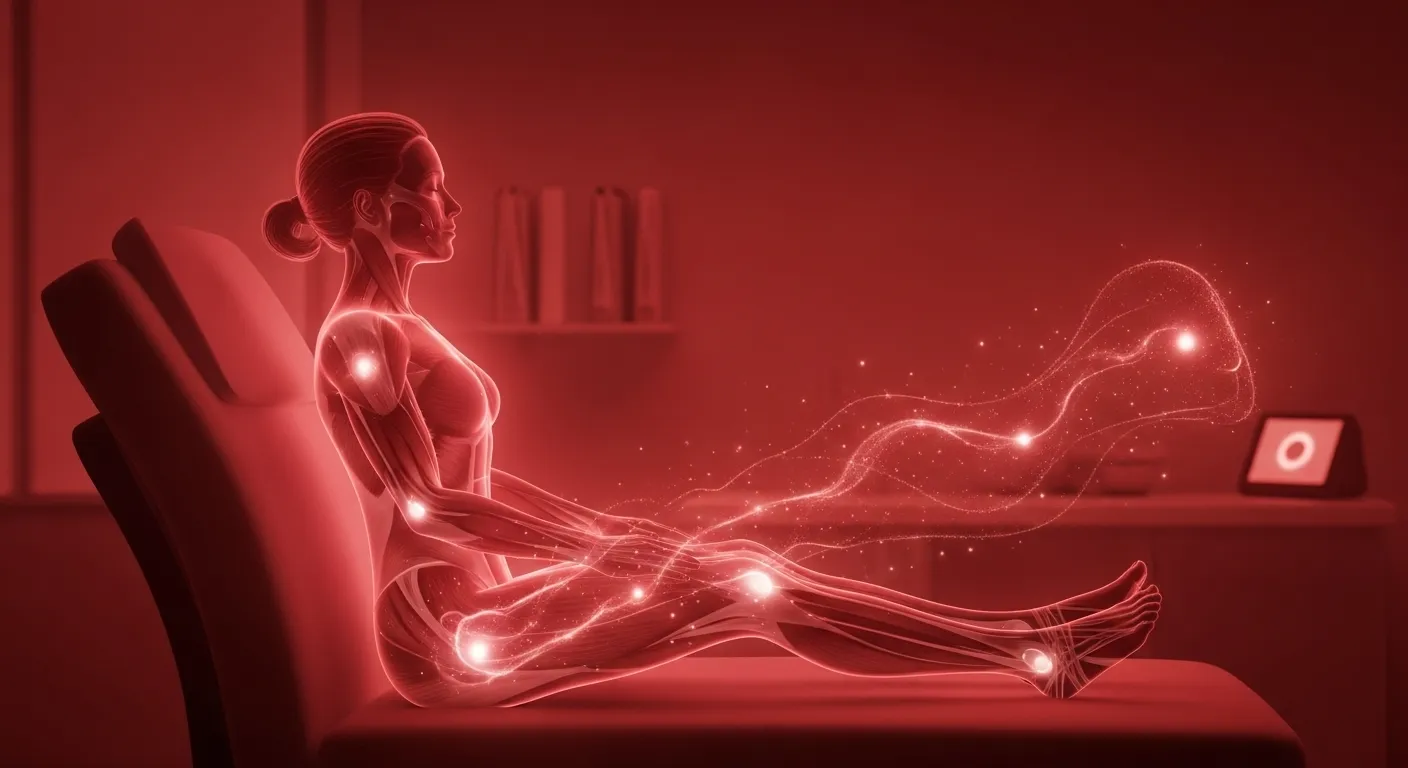
What is Near Infrared Light Therapy?
Near infrared (NIR) light ranges from 780-1200nm on the electromagnetic spectrum, just beyond what we can see. It’s at the shorter end of the infrared spectrum, where our bodies detect energy as light rather than heat. NIR light stands out because it can pass through all skin layers, tough connective tissue, and even bone.
This impressive reach lets NIR therapy affect muscle tissue, joints, and possibly internal organs. The 850nm wavelength has become popular because it targets deep tissues, boosts mitochondrial activity, and improves cellular energy production. NIR therapy brings together the best of both red and infrared therapies. It rejuvenates skin while also providing deeper healing and pain relief.
Benefits of Infrared Light Therapy
Research supporting infrared light therapy keeps growing as scientists find new ways it can help with health conditions. This treatment shows remarkable results for everything from pain management to brain function.
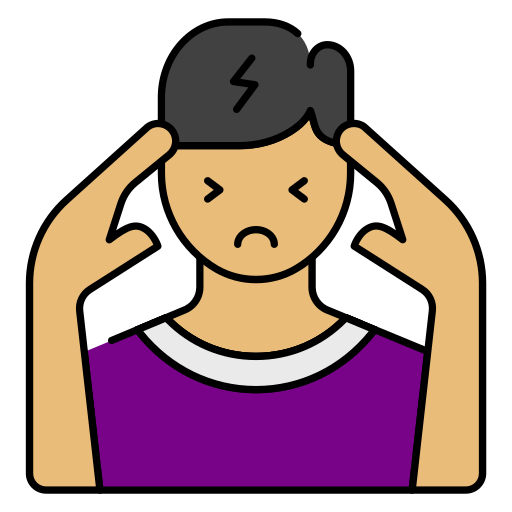
Pain Relief and Inflammation Control
Infrared light therapy works wonders for managing pain and reducing inflammation. Patients with chronic low back pain reported their pain levels dropped from 6.9 to 3 out of 10 after treatment. These results happen because infrared light goes deep below the skin to reach muscles and bones. It targets inflammation right where it starts. The therapy changes how the body handles inflammation at the cellular level. It blocks inflammatory markers like IL-6 and TNF-α. This makes it valuable for people with chronic inflammatory conditions who need long-lasting relief.
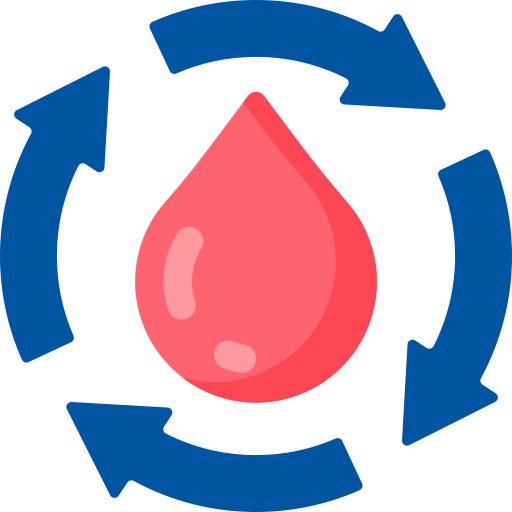
Improved Circulation and Cellular Energy
The way infrared therapy affects cell energy production is fascinating. When cells get exposed to infrared light, their mitochondria become active. This creates a substantial boost in adenosine triphosphate (ATP) – the body’s main energy molecule. Research shows blood flow can jump from 5-7 quarts per minute to 13 quarts per minute with this therapy. Better circulation means more oxygen and nutrients reach injured tissues, which helps the body heal faster.

Muscle Recovery and Athletic Performance
More athletes now use infrared light therapy to boost their performance. Studies show it helps build strength much better than control groups. Athletes also improve their endurance three times faster. Research comparing different recovery methods found that infrared light works better than cryotherapy. It reduces muscle soreness and inflammation more effectively.

Support for Brain Health and Mood
Scientists have found that infrared light therapy can make a big difference in how our brains work. Clinical trials show 92% of depression patients responded well to near-infrared light treatment. Even better, 82% no longer had depression symptoms. The therapy helps because it makes brain metabolism better. It gets neurons to produce more energy, which lets the brain work at its best. This makes it promising for treating conditions from depression to PTSD.

Skin Rejuvenation and Wound Healing
Wounds heal faster with infrared light therapy because it helps create more fibroblasts and collagen fibers. The results for skin improvement are impressive too. A study showed that over 90% of people noticed better skin texture after LED red-light treatments. The treatment gets the body to make more collagen, which improves skin’s structure and bounce. It also helps with skin problems like acne, scarring, eczema and psoriasis.
Risks and Safety Considerations
Infrared light therapy offers healing benefits, but you need to know about key safety aspects that ensure optimal results without risks.
Common Side Effects and Red Light Therapy Dangers
The biggest problem with infrared light therapy comes from how it heats up body tissues. Improper use can lead to burns, blisters, or skin peeling. Users sometimes experience these temporary side effects:
- Redness or skin irritation
- Headaches or feeling dizzy
- Discomfort in eyes
- Dry skin
- Short-term acne flare-ups
These reactions usually don’t last long after treatment and remain mild in most cases.

Who Should Avoid Infrared Therapy?
Some people need extra caution or should stay away from infrared therapy completely. If you have photosensitivity or take medications that make you sensitive to light, you face higher risks of bad reactions. Cancer patients should talk to their oncologists first since cell stimulation might affect cancer cells. People with epilepsy might react badly to flickering lights in certain devices. The therapy also needs medical clearance if you have hyperthyroidism, pregnancy, open wounds, specific eye conditions or can’t sense temperature changes properly.
Can You Overdo Infrared Light Therapy?
Research shows a “biphasic dose response” where less exposure often works better than more. Too much exposure can trigger inflammation by producing excess nitric oxide. Longer treatment times won’t boost benefits but might cause more side effects.
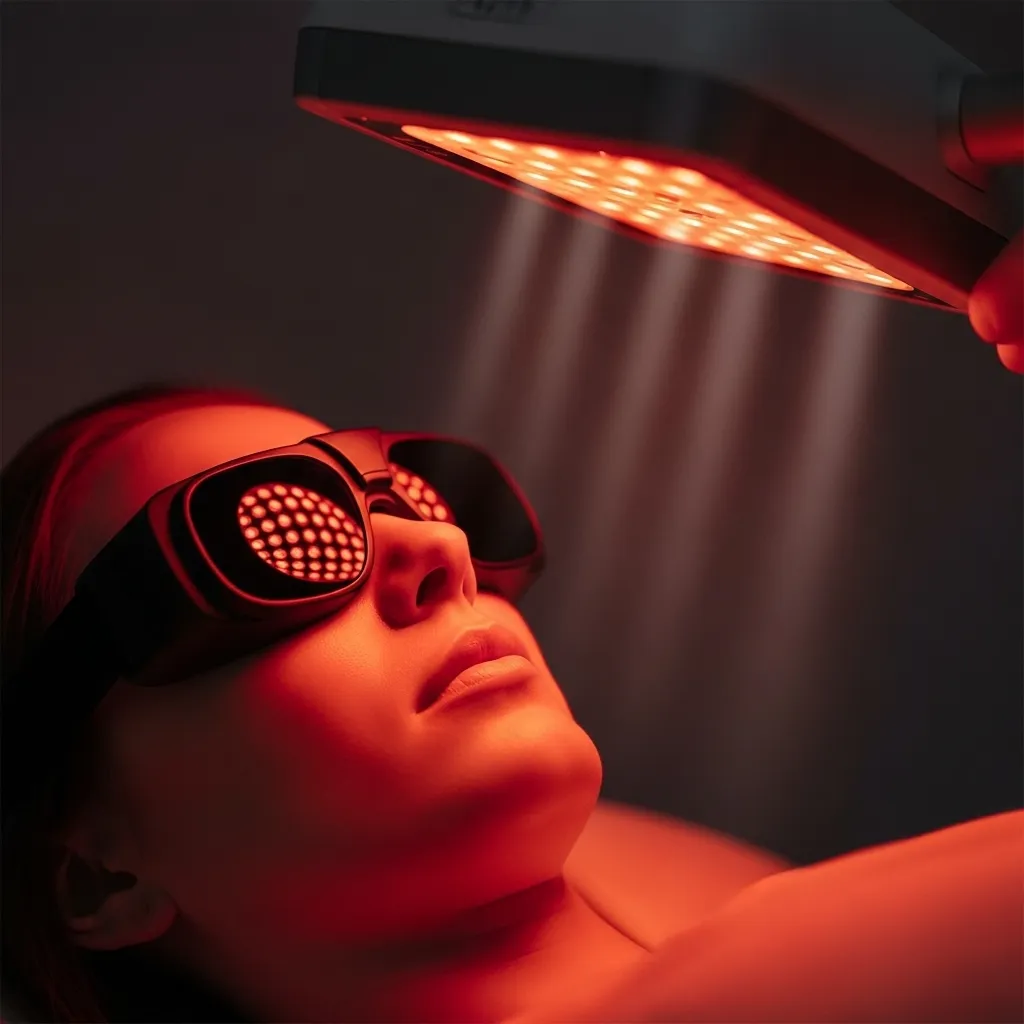
Eye Protection and Device Safety Tips
Your eyes need serious protection during treatment. Direct infrared light exposure can harm your retinas. Safety standards say eyes should only get 10mW/cm² of IR LED exposure for less than 17 minutes to avoid heat damage. Make sure you:
- Use blackout goggles made specifically for LED therapy
- Stick to device instructions
- Buy only FDA-approved devices
- Keep lights at the right distance
These safety steps help most people use infrared light therapy without problems.
Expert Tips for Choosing and Using Devices
The right device plays a vital role in maximizing therapeutic benefits of infrared light therapy. Let’s dive into what experts recommend in this expanding market.
How to choose the right infrared light therapy devices
FDA-cleared devices should be your top priority over marketing claims. Research shows wavelengths between 600-900 nanometers deliver the best results. The treatment area’s size matters too. Smaller handheld devices suit targeted areas like joints, while larger panels work better for full-body treatments.
Understanding device wavelengths and power
Device effectiveness depends on wavelength selection. Red light (630-680nm) helps skin rejuvenation, and near-infrared (800-850nm) reaches deeper into muscles and joints. Power density’s measurement in mW/cm² determines your session length, higher irradiance lets you have shorter sessions.
Tips for home vs clinical use
Clinical devices pack more power and precision under professional guidance. Home devices run at lower intensities to ensure safety and need more frequent use. You might need fewer professional treatments, but they cost between $50-$200 per visit.
How often should you use infrared therapy?
Start with 3-5 weekly sessions lasting 10-20 minutes each. Once you achieve your desired results, switch to maintenance sessions 1-2 times a week.
